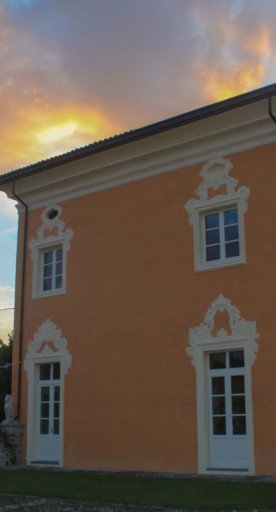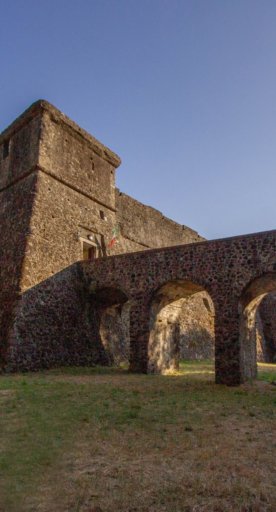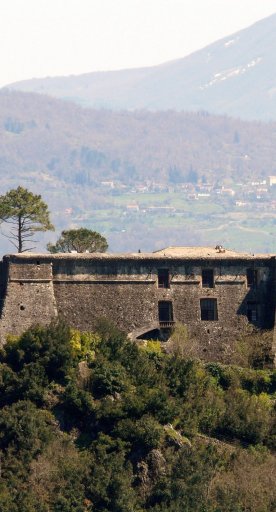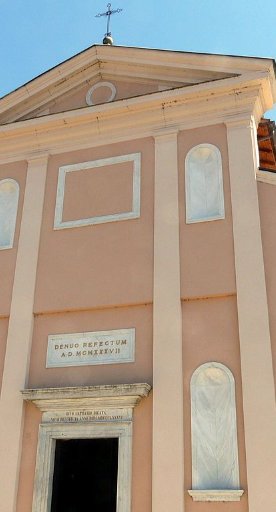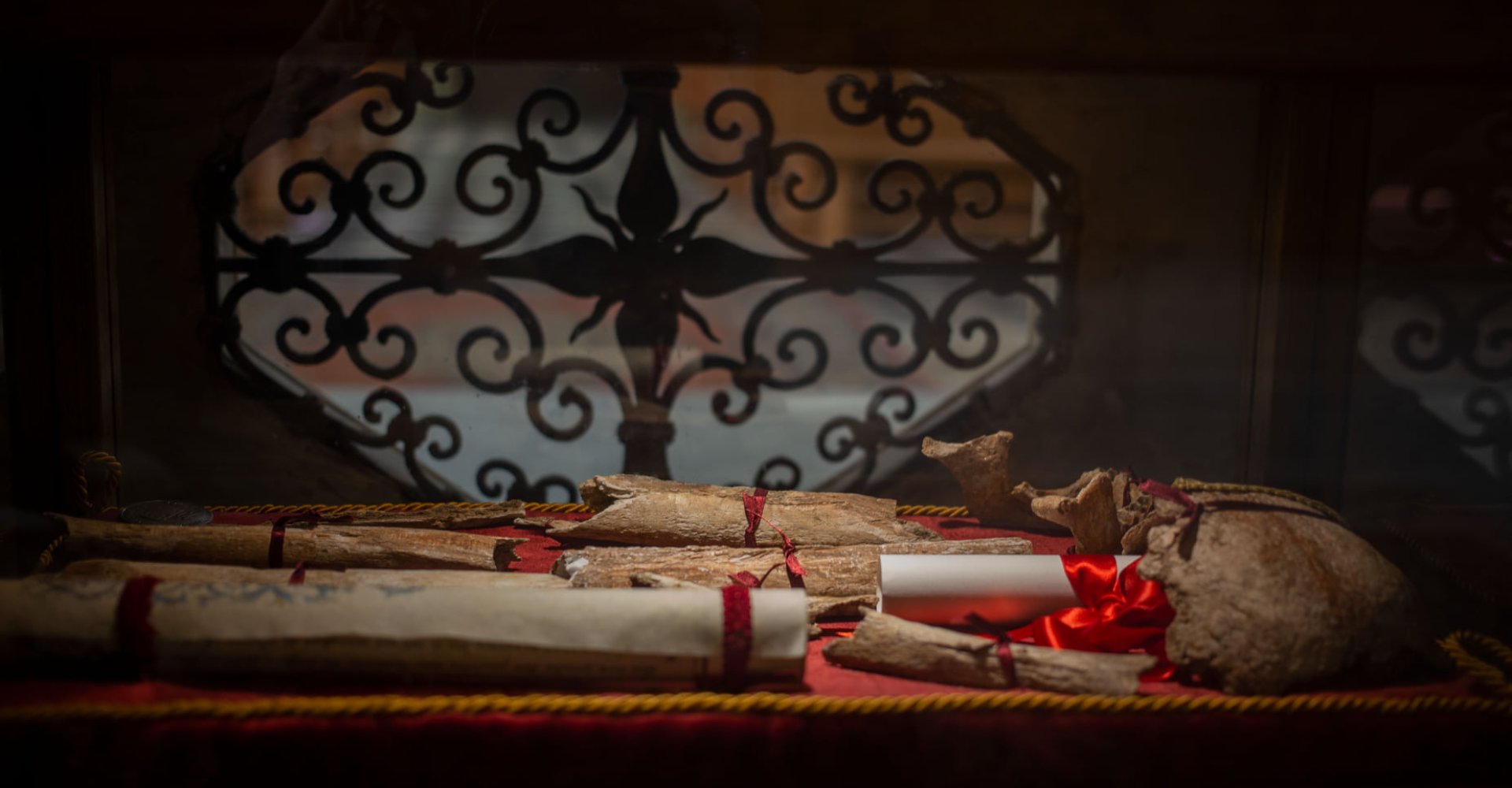
San Caprasio Museum
Discover the history of one of the most important stages along the Via Francigena in Lunigiana
The museum, set up in the San Caprasio Abbey Complex of Aulla welcomes visitors and pilgrims with a characteristic mannequin that reconstructs the dress and typical objects of the medieval pilgrim, while a 14th century column in local stone stands on the remains of a furnace for bells of the 12th century.
Here, visitors find small souvenirs and guides to the complex's itinerary, to then continue their visit by reaching the cloister-garden and other exhibition rooms.
The history of the Abbey of San Caprasio begins in 884 AD, when Adalberto I Marquis of Tuscany chose to found a church and monastery, entrusted to the monks of San Benedetto, at the confluence point between the Magra river and the Aulella stream, a strategic place and hub of the ancient communication routes which connected the north with the Apennine road system.
It will be precisely here that Sigeric, Archbishop of Canterbury and "father" of the Via Francigena, stopped between 990 and 994 AD on his return journey from Rome. Initially dedicated to Santa Maria, in 1077 the Abbey was dedicated to San Caprasio after Adalbert II, from France, brought his relics which are still preserved today inside the high altar of the Church.
Who was San Caprasio
Praised for his great reputation for holiness, he was the main spiritual guide of the most ancient and important monastic community of the French islands of Lérins, off the French Riviera. After having renounced great worldly prospects, he retired as a hermit together with two young followers.
Perhaps the experience that most characterized his life journey was the journey to the East, made together with his two young disciples, which forced them to lead a hard life of sacrifice and deprived of many comforts. Returned to Lérins, they chose to imitate the austere life of the desert fathers and, soon, many followers joined them to follow the same ideals, giving life to a large community. Although Caprasio never officially became superior of the monastic community, he is still considered the founder and first abbot of Lérins.
The Museum and new discoveries
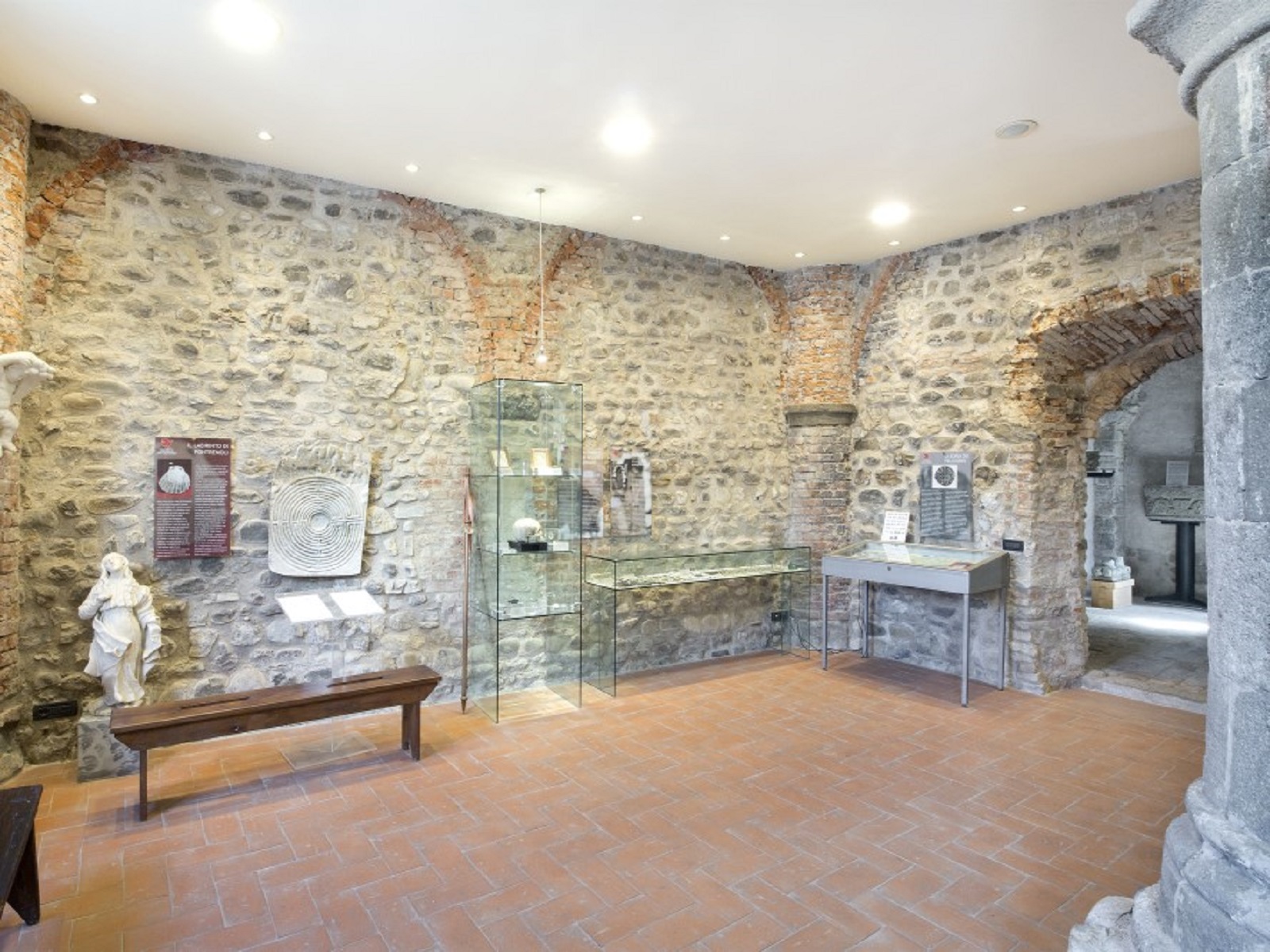
Despite the damage suffered by the Allied bombing raids of 1943-45, the recent restoration work carried out has made it possible to reconstruct and reread the traces of this fascinating thousand-year history.
In recent years, archaeological excavations inside the church have brought to light the remains of the ancient apses of the churches from the 7th, 8th and 9th centuries, as well as precious archaeological findings and the monumental tomb of the saint, dating back to the 10th century, a very rare stucco reliquary, protected by marble slabs and surmounted by a tuff covering.
The Church, the Chapter House, the Room with the Sculptures of Oberto Ferlendi and the Cloister, once at the center of monastic life, can now be visited with great attention to understand the thousand-year history of the Abbey.
Moreover, in the Chapter House and other rooms of the ancient Abbey there is an evocative exhibition which preserves and illustrates the findings following the recent archaeological excavations of 2003: coins, ceramics, capitals and sculpted stones, the precious portal, the 10th century bell furnace and the wonderful "Stone Gospel" with the fantastic winged dragons by Oberto Ferlendi.

